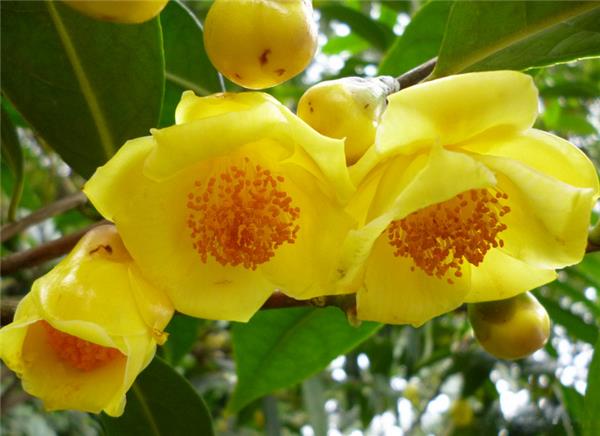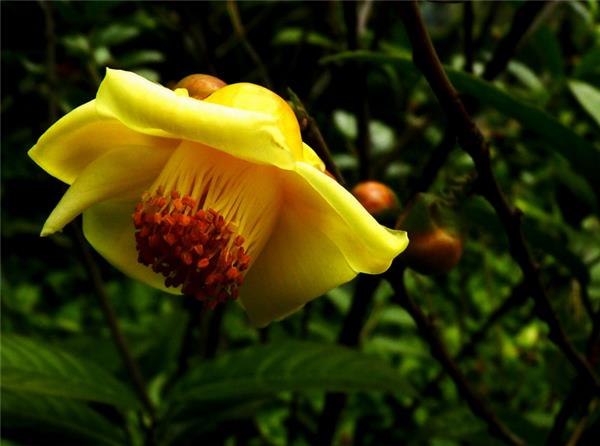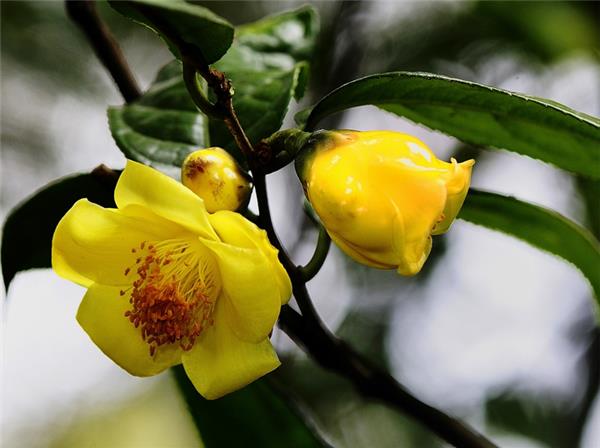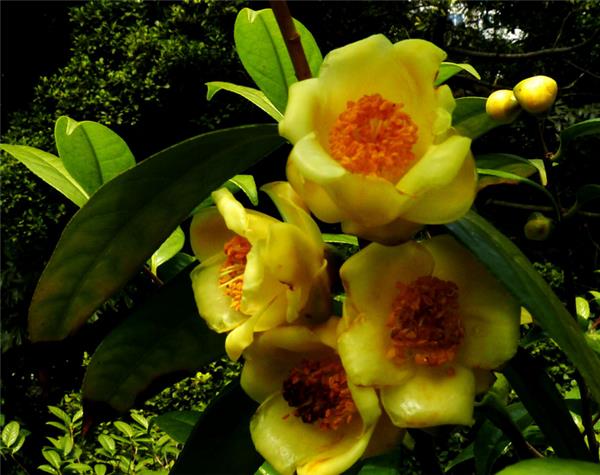Planting technique of Camellia
Golden scented tea has an obvious effect on regulating human blood lipids, blood sugar, cholesterol and enhancing immunity, and today we are going to introduce the planting technology of golden camellias.

Planting technique of Camellia
First, to create a suitable environment, golden scented tea is born in a semi-shady, semi-cool, humid environment, and needs regular ventilation, especially in the north. In addition to the heating boilers and radiators, the glass cellar is equipped with self-made atomizer, ventilator and other facilities.
Second, use proportionally prepared pine needle soil to gradually remove the "yellow mud" brought by the south.
Third, the water for watering flowers must add 1% ferrous sulfate each time, so that the water always maintains a certain degree of weak acidity.

Fourth, in addition to the well-ventilated environment, we should also give it regular "physical exercise". Blow the wind every two weeks, and the wind should be uniform. The aim is to promote its metabolic balance and normal development through "exercise".
Fifth, control the temperature, the temperature difference should be 7 ℃ to 10 ℃, when the pit temperature is 20 ℃, put down the sunshade cloth four or five hours later, and then ventilate.
Sixth, fertilization, one is diluted yogurt, this method does not need to ferment can be used directly, another traditional method is fermented soybean cake water. You can apply fertilizer once a month.

Propagation methods of Camellia
① cutting: in the dry season from May to June, select the young mother tree, cut one-year-old twigs from the top, about 10cm, remove the lower leaves, flatten the lower leaves with a blade at the bottom of the node, keep one lateral bud at the top, and insert 2-3 leaves into the medium of river sand or gravel. After insertion, cover up the grass curtain to shade, enhance the foliar spray, adhere to the air humidity of the bed, and promote rooting. In order to improve the survival rate of cuttings, the cuttings can be soaked in 50~100ppm 's ABT rooting powder solution for 8 hours and 12 hours.
② grafting: choose strong seedlings or camellia species that can easily survive as rootstocks, truncate at the ground diameter 4~5cm, split about 1.5cm deep through the pith, use 1-2-year-old branches as scions, keep 1-2 leaves in the upper part of the scion, cut into wedges in the lower part of the scion, and stab into the split of the rootstock, the constituent layers on both sides should be closely joined, and then tied tightly with plastic tape.
After grafting, cover the scion with a plastic bag and tie it with a belt below, but not too tight, so as to form water droplets in the bag and drop on the rootstock from time to time. Add a packing paper bag to the outside of the plastic bag to cover the direct sunlight.

③ bud insertion: take each bud node as a segment, save a leaf, about 1.5cm, cut the lower part oblique, and then stab it into the medium, the depth is to cover the branches. This method can make full use of branches and is suitable for many reproductive needs.
④ potted plant: when potted Jinhua tea is planted, it is appropriate to choose rotten leaf soil or peat soil plus part of garden soil and river sand to prepare culture soil. In order to make it grow rapidly. It should be planted in a well-breathable tile basin. When planting, it is best to choose a deep and simple basin, first fill a layer of broken tiles on the bottom of the basin to facilitate drainage; then apply a small amount of rotten cooked cake fertilizer or bone powder as base fertilizer, and fill a layer of culture soil on top of the fertilizer; then put the seedlings into the center of the basin, fill them layer by layer into the culture soil layer by layer, fill them layer by layer while compacting, and finally leave about the edge of the basin. After planting, it was watered and cultured in a semi-shady place, and the seedlings were slowed down and transferred to normal management.
- Prev

Explain in detail the culture methods and matters needing attention of Dishui Guanyin.
Explain in detail the culture methods and matters needing attention of Dishui Guanyin.
- Next

Is poinsettia toxic? the effect of poinsettia on household environment
Is poinsettia toxic? the effect of poinsettia on household environment
Related
- Wuhan Hospital Iron Tree Blooming Result Was Instantly Frightened by the Gardener Master
- Which variety of camellia is the most fragrant and best? Which one do you like best?
- What is the small blue coat, the breeding methods and matters needing attention of the succulent plant
- Dormancy time and maintenance management of succulent plants during dormancy
- Minas succulent how to raise, Minas succulent plant pictures
- What are the varieties of winter succulent plants
- How to raise succulent plants in twelve rolls? let's take a look at some experience of breeding twelve rolls.
- Attention should be paid to water control for succulent plants during dormant period (winter and summer)
- Watering experience of twelve rolls of succulent plants
- Techniques for fertilizing succulent plants. An article will let you know how to fertilize succulent plants.

